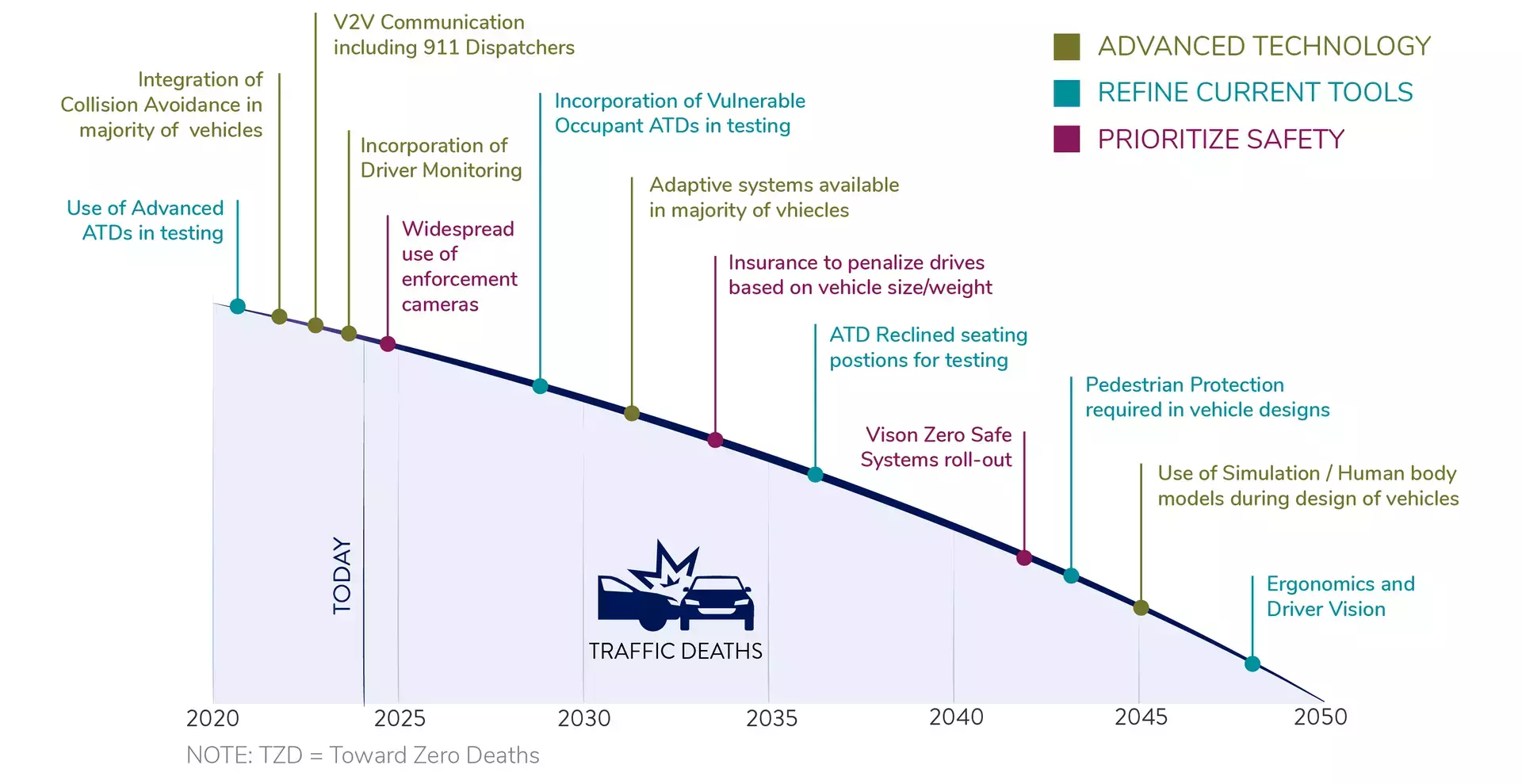Change won’t happen without a revolution.
The euphoria of the 1950s and 1960s driving culture gradually gave way to the shocking realization of the human tragedy left in its wake.
Our Shared Mission
People realized the perils resulting from speed, reckless unbound behaviors, and design that prioritizes seduction over safety. The impact of thousands of lives lost and countless more people injured on the roads was reaching virtually every family. Something had to be done to focus on safety.
The rallying cry was Ralph Naders’ “Unsafe at Any Speed” which detailed the need for a system approach to safety. It resulted in the 1970s with the formation of the US Federal agency for Safety – the National Highway Traffic Safety Administration (NHTSA).
Since that time, a combination of regulation, engineering innovation, consumer education and legislative enforcement has been effective in driving down fatality and injury rates. The deaths per million miles driven have been more than halved, showcasing relentless safety innovations and improvements.
Increase in US Road Deaths
However, in the last decade, road deaths in the USA have risen by 30%, and the commitment to continue reducing these numbers has not been matched by new regulations or outcomes. Globally, 1.4 million people still die and tens of millions suffer serious injuries each year.
A holistic methodology to safety has gained popularity in recent years, especially in the field of transportation safety -- The Safe System Approach . At the core of the methodology is the belief that everyone has the right to be safe while traveling, whether by car, bike or foot. The paradigm recognizes that safety is a shared responsibility requiring cooperation from all stakeholders, including policymakers, road designers, vehicle manufacturers and road users themselves.
The UN ECE, WHO and Global NCAP organizations recognize the huge challenge ahead with any safety approach and have laid out a shared mission under Vision Zero, committed to eliminating traffic fatalities and severe injuries to zero by 2050.
Supporting Vision Zero
The safety community is actively engaged in numerous initiatives to achieve significant advancements toward Vision Zero.
These efforts are organized into three main categories: refining existing tools and practices through improved crash test dummies and air bag systems; advanced technology in automatic braking crash avoidance systems, simulations and Human Body Models; and prioritizing safety as a policy and politically.

A community with a shared vision and an industry with a shared mission is what we need to make progress in saving lives. While we can debate whether it is one regulation or technology over another, we must commit to deciding on action measured by outcomes. Prioritizing safety is essential to achieving Vision Zero.
Help of Innovative Technologies
In the coming years, innovative technologies will significantly enhance road safety and efficiency. Cameras will improve traffic law enforcement by automatically detecting violations like speeding and illegal parking, increasing accuracy and efficiency. Driver behavior tracking systems will monitor driving patterns, allowing insurance companies to adjust policies based on safe driving and vehicle characteristics, such as size and weight. By prioritizing safety, these technologies can drive progress toward the goal of zero traffic fatalities, promoting safer driving habits and encouraging policies that prioritize the well-being of all road users.
UP NEXT: Can regulators and the industry keep up with the pace of change enabled by data, simulation and AI?
Our 'Safety as a Mission' article series covers several key topics in advancing safety technology to save lives. Click the articles below to continue reading about 'Safety as a Mission:
- Part 1: Embracing the Integrated Ecosystem
- Part 2: Our Shared Mission is to Prevent Millions from Dying
- Part 3: A Vision Inspires Hope. A Mission Demands Action
- Part 4: Equitable Design: Design for Every Body
- Part 5: Pedestrians Take a Hit
- Part 6: Next Generation ATDs & the Connected Lab
- Part 7: Welcome to the Proving Grounds: Smart Testing for Crash Prevention
- Part 8: Partnership as an Accelerator: The Agile Model of Development
- Part 9: Conclusion: Safety as a Mission: The Need for Action.
Want to Read More?
Subscribe to the Humanetics Pulse newsletter to learn more about safety as a mission and the full ecosystem.

Barney Loehnis
Barney is the President of Humanetics Sensors & Chief Marketing Officer, leading our Sensor group and marketing growth programs, strategic communications, and customer experience design. He has led marketing and digital transformations in Europe, Asia and the USA in B2B, B2C and agency sectors, for clients like IBM, VW, Huawei, Qualcomm and Mercer Consulting. Barney is a British and American citizen, a bad runner and avid cook.

